As the year comes to a close, discussion and analyses on folding e-bikes has figured prominently across the interwebs — we take a deep dive.
Other subjects:
- Adventure/All-Terrain Category
- Yamaha, Acer, Honda and the reason why motor vehicle cos are getting into e-bikes
Contents
E-bike Tipping Point
German riders will buy more e-bikes than conventional models this year.It’s a remarkable statistic given that the shift to e-bikes really only began in earnest in the middle of the last decade.
Prior to 2015-2016 e-bikes were a niche product and beginning to slowly make their way into (mass) consumer consciousness, with some e-bike-only brands existing beside e-bike models offered as a tiny part of a brand’s conventional line. Now with e-bikes becoming the predominant type of bicycle, it’s likely that conventional bikes will eventually assume the niche position formerly occupied by e-bikes, perhaps inside of a decade.
Folding Bikes: Problems and Solutions
One of the most astonishing events in the bike industry occurred back in 2011—the creation of the Tern brand out of the long established Dahon folding bike brand, a result of a family disagreement over the company’s future.
Tern has since developed into a prominent and innovative manufacturer of fine folding bikes—especially e-bikes—buoyed by the vision of their founder, Josh Hon.
Dahon, meanwhile, has taken a more conservative course by continuing to offer a modest range of bikes including several folding e-bikes.
Dahon’s founder, physicist and entrepreneur Dr. David Hon, has published anarticlethat is interesting reading for anyone on the supply side of the industry producing folding bikes.
We might have otherwise declared this required reading rather than merely “interesting” given the credentials of the writer and the grounding of the discussion in physics and geometry—and that part exceeds anything the marketing-oriented writing of most discussions on these topics.
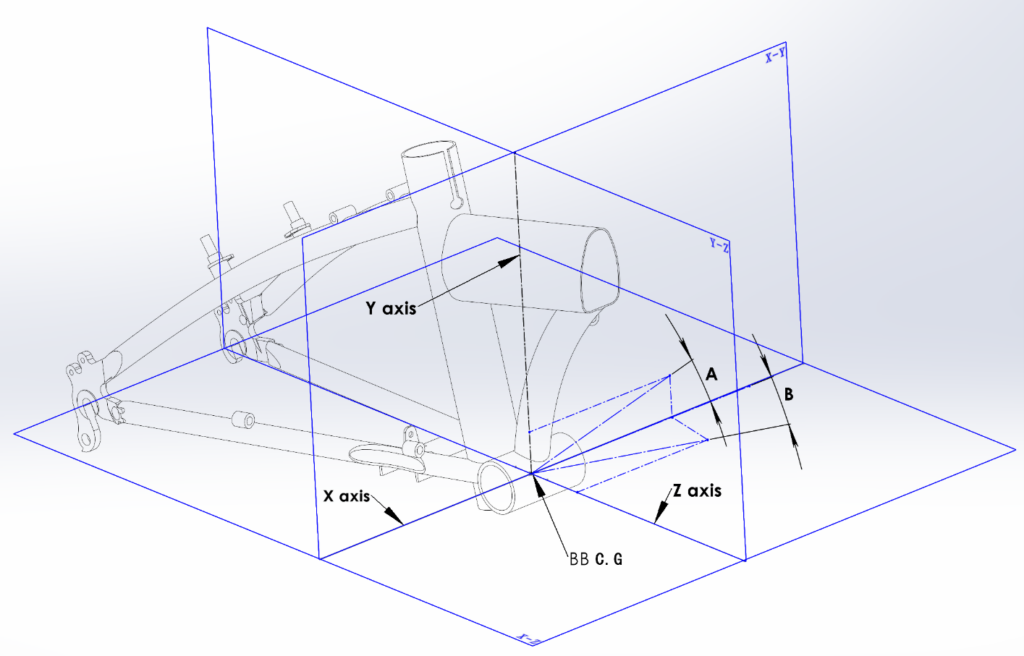
A crucial part of the discussion focuses on the BB shell (BB “tube” in the article) and its “6 independent degrees of freedom”, the context being the problem of energy loss through frame flex. The principles discussed are important enough that everyone in the bike industry should be at least introduced to them.
The academic rather than practical nature of the problem becomes visible, however, when you consider that the efficiency of a cylcist on a bike ranges from around 18% up to 26% or so for the pros riding the stiffest, most efficient bikes. The quest for high efficiency cuts significant seconds off times for pro riders while being irrelevant for general cyclists.
The other issue is that with the electrification of folding bikes, flex inefficiencies (and weight inefficiencies for that matter) cease to be of practical importance. Adding a mid-drive or hub motor to a bike cancels out the need for optimization since energy inefficiencies are countered by electrification.
The discussion of the potential loosening of the folding hinge over time (in those models using such a hinge) due to flex from the weight of the rider is one to take note of—doesn’t matter whether a folding bike is electrified or not—a loose hinge could be deadly.
A fundamental weakness of the argument is the conclusion that “propulsion efficiency” is at the forefront of “consumers’ solid needs” which is actually an assumed principle upon which the article is based, not a naturally emergent conclusion from the points made.
Consumer needs are primary but as Rick Vosper arguesfrom a big picture perspective:
[B]rand success does not come from advertising. Not from race teams. Not from a website. Not even, solely, from how competitive your products are. At the end of the day, it’s retailers that make the difference between a top-selling brand and an also-ran.
Sliding Frame ‘Folding’ E-bike
Folding bike mechanisms have ranged from quite complex to simple which includes variants of the hinge structure which has turned out to be the easiest means to fold a bike. Hence, most designs use a hinge.
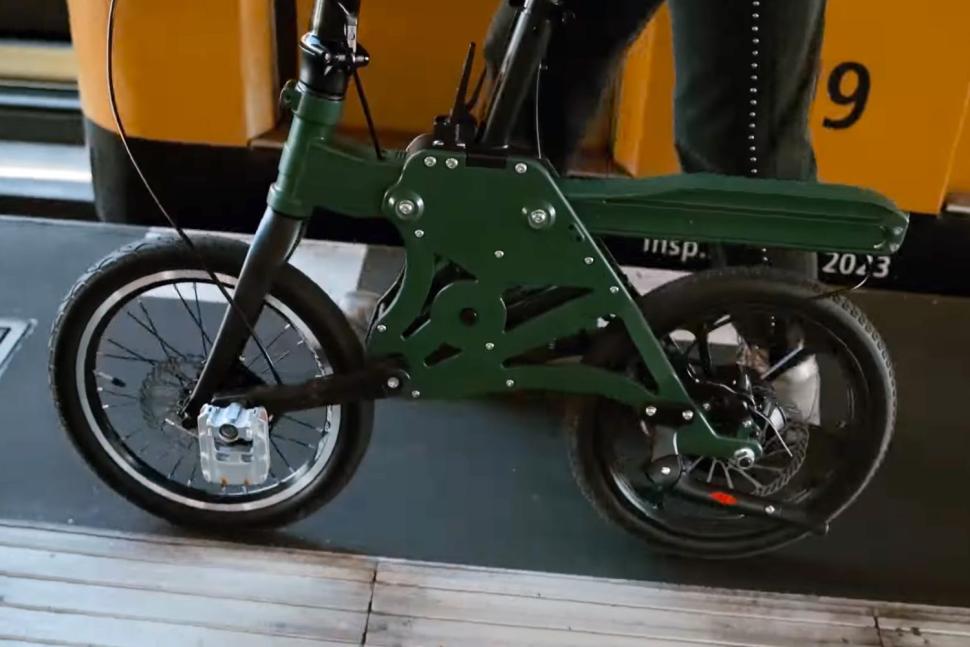
Road CC declares the new electric version of the Pop-Cycle the most “bizarre” design that they’ve seen in this space even though the sliding concept was the basis for at least one Taiwan company that produced a range of conventional bikes using the sliding frame concept many years ago.
A sliding mechanism creates a more compact ‘folded’ package than a hinged folding bike since the hinge means folding along an axis which necessarily produces extra lateral bulk.
It was only a matter of time before sliding frames made an appearance. Although this incarnation is not the most aesthetically appealing which may limit its market impact, for practical intents and purposes, it may be appealing.
‘Adventure’ or ‘All-terrain’ as a Category
There’s a thin line separating innovation—true innovation—from gimmick when it comes to product design in any vertical which is certainly becoming more and more visible in the crowded e-bike space. The value of “innovation” stems from new techniques or technology as the main source of differentiation; and differentiation is a key variable in the battle for market share.
What then can we make of the appearance of ‘adventure’ and ‘all-terrain’ as categories designed, ultimately, as a point of differentiation? The shift to e-bikes that began in earnest some eight years or so ago began with the adoption of e-MTBs by dedicated trail warriors in Europe. And if there’s ever an e-bike that is by definition an adventure bike, it’s the eMTB.
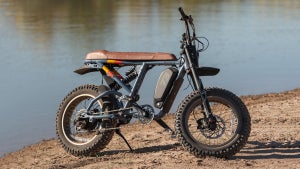
The features marking an e-bike as belonging to the adventure category would appear to be the fat tires, an elongated seat, and robust high-travel suspension, making one look like a enlarged version of the motorized mini bikes that appeared in the early 1970s (alongside choppers and dragsters as it happened). High performance ‘adventurous’ fun seems to be the message from these types of e-bike.
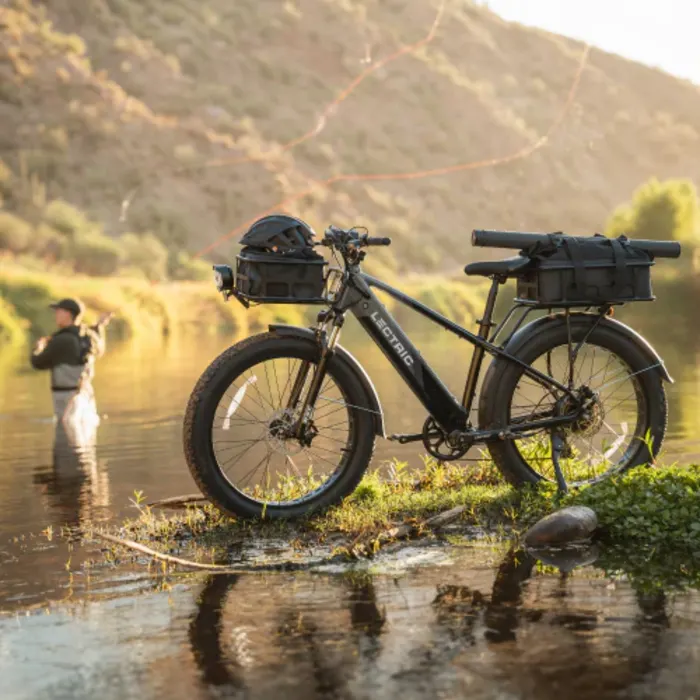
‘All-Terrain’ e-bikes arguably do a similar job, although the MTB pedigree is clear—almost classically clunker with fat tires. You can pack plenty of kit on board, probably more than an adventure bike as long as suitable bike packing accessories can be sourced.
All in all there’s nothing especially innovative in either of these categories but each has its functional appeal and we’ll definitely see continued development of more models under one or the other category. An example that represents a solid addition is Fido’s Titan.
Announced last year, the Titan now ready to ship and looks like it will make an impact with a powerful motor and, notably, dual batteries with the possibility of extending the range with one more which would turn it into a three battery unit. While dual batteries are in an early adoption phase, an obvious way for a brand to add value would be to up the ante and offer a third unit. Expect to see more in this vein heading into 2025.
Yamaha showcased AWD prototypes in Japan recently. A mid-drive motor coupled with a front hub motor and twin batteries and power steering has been inspired by design innovation from their motorbike tech. Better handling and stability is the rationale, which will make a good marketing play to the right audience.
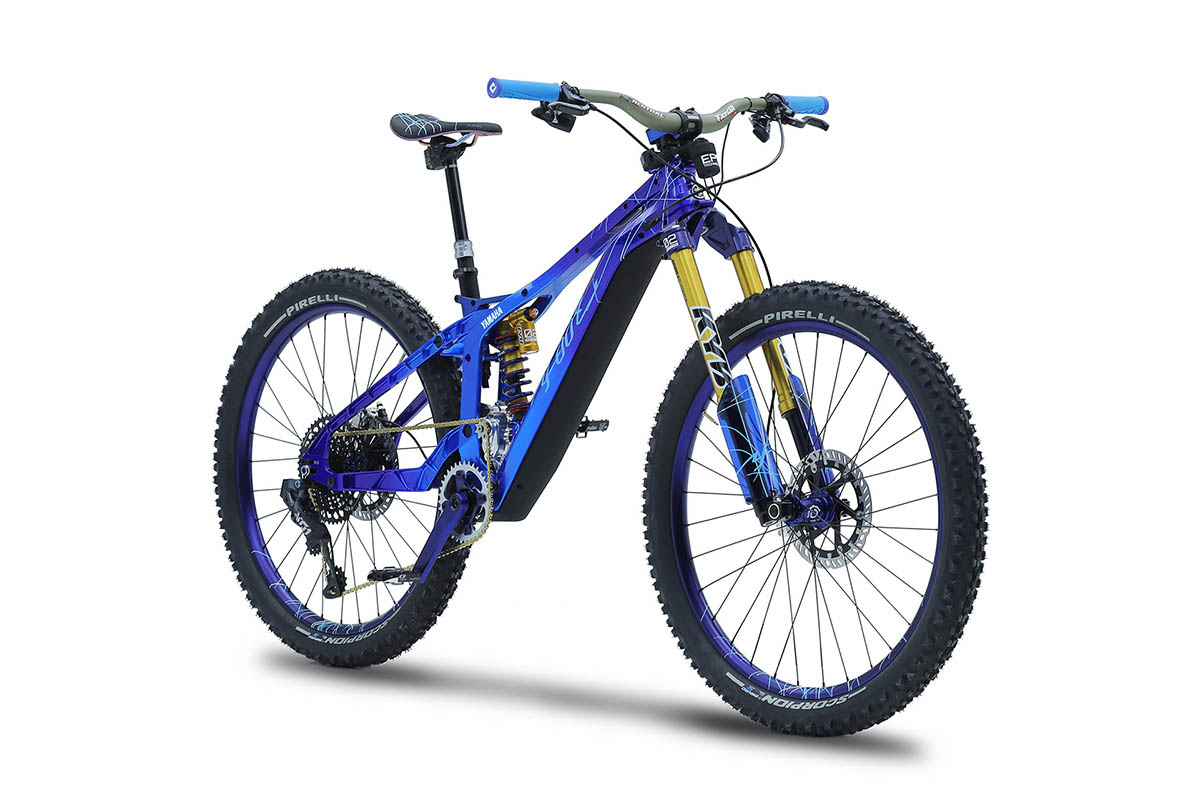
The Y-00Z model looks the part. Sleek. Inviting.

The Y-01W does not sleek but may well be comfortable. We’ll see if either make it into production. Whatever the case, AWD has a logical place in e-bike tech somewhere, somehow.
Iconic Brands Crossing Verticals
The British iconic brand MINI has launched another e-bike following their range of steel e-bikes—two urban and one randonneur—under the Cooper Bikes brand. This one shouts MINI—in no uncertain terms—the length of the fork blades which is a clever touch, abandoning the conventional down tube position.

The “E-bike 1” city bike is futuristic, connected and “intelligent” featuring a built-in touch screen and sophisticated security. If Apple were to produce an e-bike, it would be something along the lines of this one (although Acer’s ebii is also a good candidate). The parallelogram frame de-emphasizes the diamond producing quite the distinctive look. Plus a two year warranty on theft. “If your bike is stolen, we will replace it” they claim.
Aston-Martin has also jumped on the bandwagon although the target is clearly the very high end. You get a bespoke steed at a bespoke price: the “most advanced and most engineered bicycle ever created” they say. If you go for the high ground, go all the way.
On the flip side, here is a traditional OEM/ODM bike component maker, KMC chain, making a play for the very competitive e-bike motor space (Taiwan’s Neco went the same way a few years ago).
Acer have indirectly made significant forays into the e-bike space through their MPS motor and Darfon battery brands.
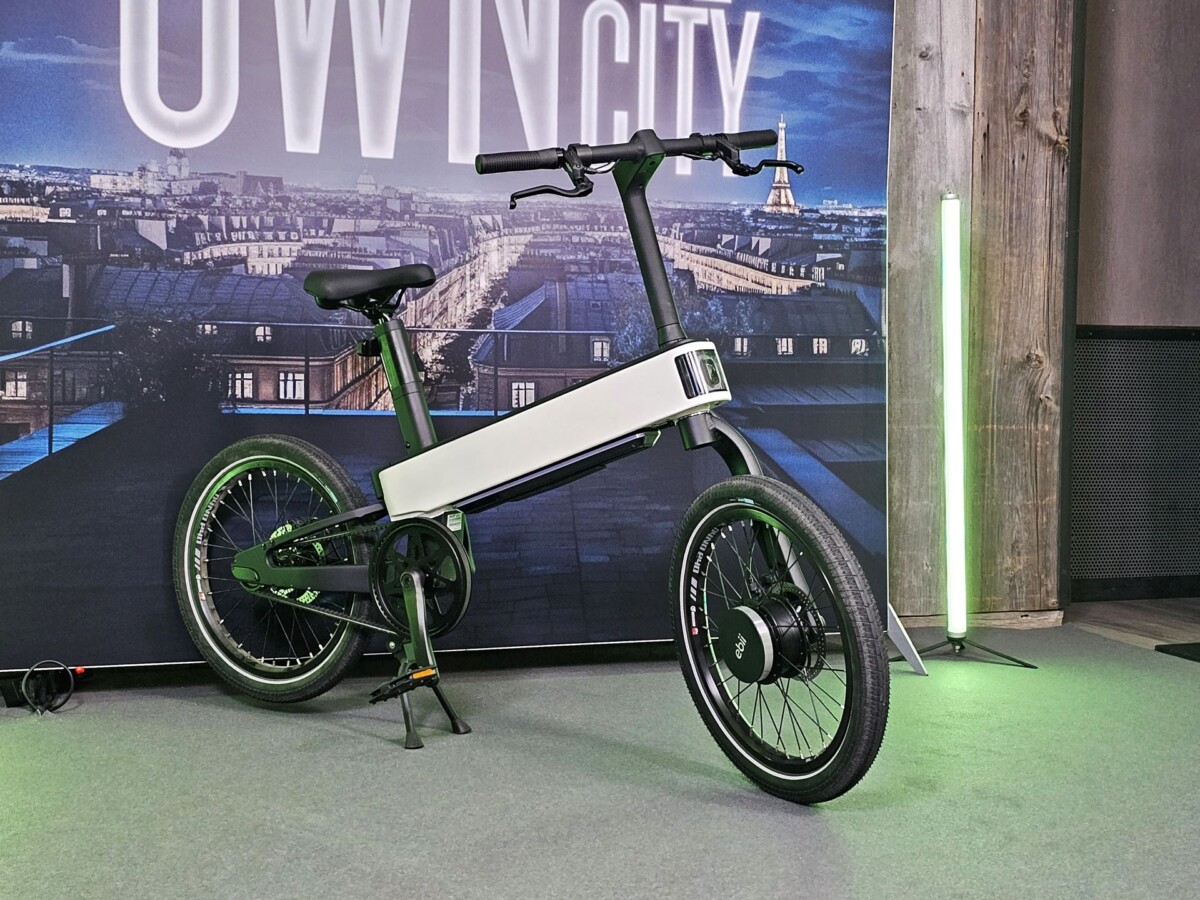
They’ll be launching the Acer ebii in March 2024—having announced the project during the last Taipei Cycle Show, the launch will most likely coincide with Taipei Cycle 2024 which kicks off on March 6. Yes, it looks like a battery on wheels, which is not a killer although surely not the best look (designers…what were you thinking?). Functions include tires that never go flat, collision detection, and fast charge. Can’t get over the looks though.

Honda have just released their first eMTB. A bit like Yamaha, they’ve taken inspiration from their own motorbike range which is clearly visible at a glance; combining “the FUN of motorcycles and FUN of a mountain bike” according to their marketing blurb. Well, legacy bike companies have been in this niche for a lot longer. Perhaps Honda’s brand power will see them get a toehold in the market and even bring newbies on board. But it won’t be easy.
A powerful rationale for motor vehicle brands to be consistently attempting to make headway among e-bikes may well be thate-bikes and scooters displace 4x as much demand for oil as all of the EVs in the world. Even if it was only half as much, EVs seem destined to not fill the void that will open up as the transition to electrification from combustion ramps up over the next decade perhaps making e-bike success necessary to keep shareholders happy and perhaps even long term survival.
In Other News
A day in the life of a bike designer. Not e-bikes per se, but certainly gives us an insight into the design process.
Early in a project:
What is a bike’s main scope?
What experiences need to be created?
What features will meet the needs of a rider?
Meet with riders, dealers to understand their point of view
Later in a project:
Finding solutions to meet the expectations established in the first stage
Key issue – how to create a “bold, beautiful bike” to get the target consumers to “fall in love” with the bike.
Interesting insight into some of what goes into the design process.
